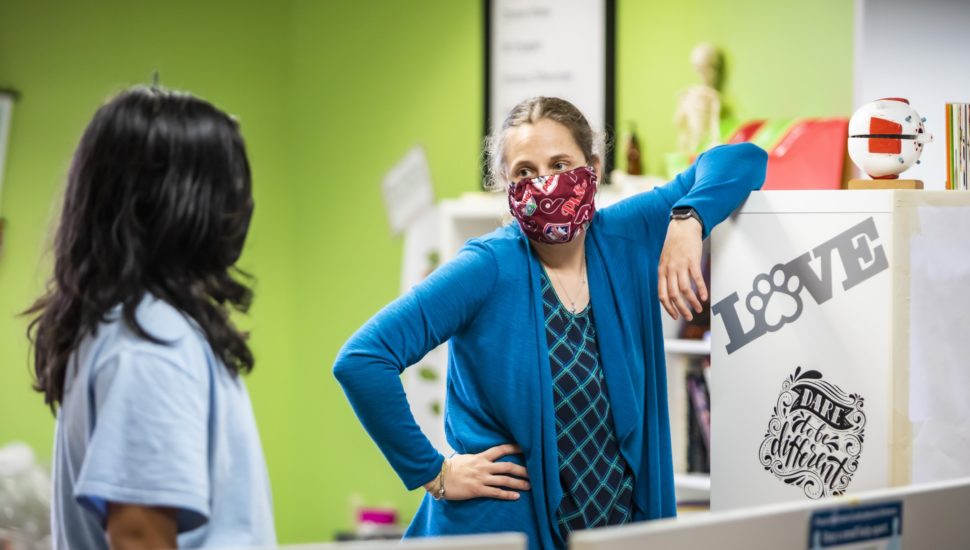Creating Safe Spaces for Students

This article was originally published on December 16, 2020 by MontcoToday.
By Stephen Hood
As a counselor for The Lincoln Center for Family and Youth (TLC) at our Leadership Academy, I have personally experienced the ongoing instability in education during these difficult and unprecedented nine months.
In the education community, there seems to be a great deal of concern about where we are and where we are headed next.
The frequent switches back and forth between virtual and in-person learning has set many students back academically, emotionally and socially.
In addition, teachers, counselors and other vital school staff members are continually being asked to quickly master brand new approaches to doing their jobs effectively.
While we continue trying to navigate these many challenges, one thing is certain. Everyone in the education community is committed to figuring out the best ways to serve our youth right now.
When students feel unsafe or experience an imbalanced emotional state, their learning abilities typically begin to diminish.
For that reason, it is important that we actively work toward creating safe spaces for our students that help promote their overall well-being and empower them to succeed.
Whether in the classroom, counseling office or virtual meeting, safe spaces can provide opportunities for students to decompress and replenish their ability to learn.
So how does one create a safe space?
Here are a few simple ways to get started.
Define the safe space
As educators, we can only control what is within the boundaries of our professional duties. We cannot control what students experience outside of school that directly impact their in-school experiences.
That is why our first step toward supporting students must be to make sure they feel safe, honored and cared for in their school settings. Actively reassuring students that they are safe in class spaces can have a very positive effect on each student’s learning and mental health.
In many cases, students may not be aware of what a safe space is, so it is always a good idea to take the time to explore what safe spaces mean to them and encourage them to work with you to design the safe space.
This can ultimately lead to clear and positive boundaries that can be developed collaboratively between students and educators.
Create a connection
Connections are necessary when creating safe spaces, and meaningful connections begin by meeting students where they are.
Learn and acknowledge each students’ individual uniqueness, power and imperfections. Truly getting to know your students eliminates assumptions and judgmental mindsets and allows you to meet the individual needs of each student.
As you get to know your students, be sure to allow students the opportunity to get to know you as well. Students often respect people who they can relate to, so it is important to lead by example.
When they see you opening up and becoming vulnerable, chances are they will be empowered to follow suit!
Build a sense of community
Growing up, students often struggle with identity of self and a sense of belonging.
Implementing practices such as, what I like to call, sentiment circles within classes or group sessions allows students to communicate and connect with one another on a personal level.
In these circles, students are asked to share their thoughts, feelings and opinions on any given topic with the group.
Consistently using an approach like this ultimately leads to a greater level of support and an improved sense of belonging among students.
Praise successes and failures
All students should be celebrated for their successes. Celebrated successes usually breed more success.
Similarly, failures should also be appreciated. A student who makes a mistake or fails at a task should be reminded that mistakes are a normal and acceptable part of life.
To help students better understand this principle, try sharing stories of your own faults and moments of defeat.
When students learn to embrace their imperfections, their academic and personal successes can truly begin to manifest.
My job at The Lincoln Center helped me see a new side of education. The small class sizes allow teachers to work with their students individually, and this outpouring of support greatly increases the confidence of our students.
As we move forward, my hope is that educators and students throughout our community will have all that they need to thrive in this new world.
Creating and fostering safe spaces in our schools is an excellent way to begin making that happen.
To learn more about the Lincoln Center for Family and Youth, click here.